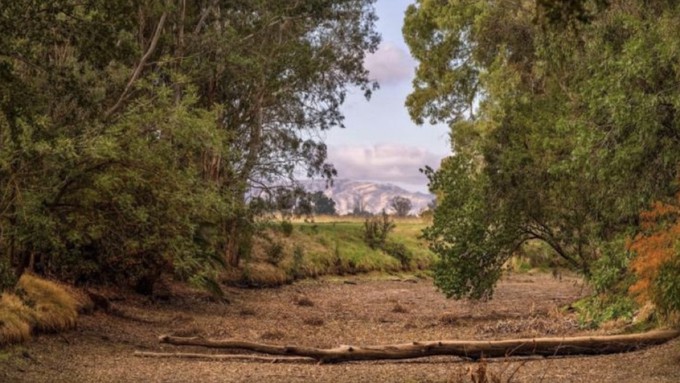
CNPS Ambassador Patricia Carpenter opens her property to visitors Sunday

Autumn softens all the colors in the landscape. This view looks west from Patricia Carpenter's garden, which is just outside Davis. Photo by Beth Savidge, courtesy Patricia Carpenter
With plants heading into dormancy and the colors softening, autumn is an ideal time to take an observational stroll through nature.
Patricia Carpenter, a California Native Plant Society Garden Ambassador, will open her 1-acre native-plant garden from 9 a.m. to 1 p.m. Sunday, Nov. 5, for her Autumn Ramble. (Remember that Pacific Standard Time starts early Sunday; clocks turn back 1 hour.)
The garden, west of Pierce Ranch Road south of Russell Boulevard, will be open rain or shine for self-guided tours; visitors may start any time during those hours. Admission is free but registration is required here. Maps will be available for use on site.
Carpenter's Verge Experiment, along the bike path that parallels Russell, recently was honored by Pacific Horticulture magazine. It was one of three West Coast gardens described by the publication as "volunteer-powered designs with community at their heart."
“After 35 years controlling weeds along the bike path in front of my property, I decided to start planting," she wrote in her application. "With climate change and the reality of recurring future droughts, I kept wondering just how little water I could use and the verge experiment began.”
The bike path is viewable any time, but Carpenter's property is open to the public just four or five times a year. On Sunday, an optional short orientation and Q&A gathering with Carpenter is scheduled at 10 a.m. and noon; meet at the check-in table. Other special activities for this Ramble:
-- Botanist Glen Holstein will be in attendance. His favorite topics include the new CNPS Yolo-Colusa Chapter and conservation of native plants.
-- Restoration ecologist Julia Michaels from Hedgerow Farms will visit to give away native wildflower seeds and show off some of the cool species growing at Hedgerow. https://hedgerowfarms.com/
-- The Miridae Mobile Nursery will parked next to the property to satisfy visitors' native-plant purchase urges. A link to their current plant list is available here.
Visitors are advised to wear sturdy shoes, and are welcome to bring a lunch or snack to enjoy onsite. No dogs, please. A composting toilet available.
Carpenter's non-native garden will be open to view as well. Read more about her native garden on her CNPS profile page.
Comments
0 comments have been posted.Sacramento Digs Gardening to your inbox.
Sites We Like
Garden Checklist for week of July 21
Your garden needs you!
* Keep your vegetable garden watered, mulched and weeded. Water before 8 a.m. to reduce the chance of fungal infection and to conserve moisture.
* Feed vegetable plants bone meal, rock phosphate or other fertilizers high in phosphate to stimulate more blooms and fruiting. (But wait until daily high temperatures drop out of the 100s.)
* Don’t let tomatoes wilt or dry out completely. Give tomatoes a deep watering two to three times a week.
* Harvest vegetables promptly to encourage plants to produce more. Squash especially tends to grow rapidly in hot weather. Keep an eye on zucchini.
* Pinch back chrysanthemums for bushy plants and more flowers in September.
* Remove spent flowers from roses, daylilies and other bloomers as they finish flowering.
* Pinch off blooms from basil so the plant will grow more leaves.
* Cut back lavender after flowering to promote a second bloom.
* It's not too late to add a splash of color. Plant petunias, snapdragons, zinnias and marigolds.
* From seed, plant corn, pumpkins, radishes, winter squash and sunflowers.